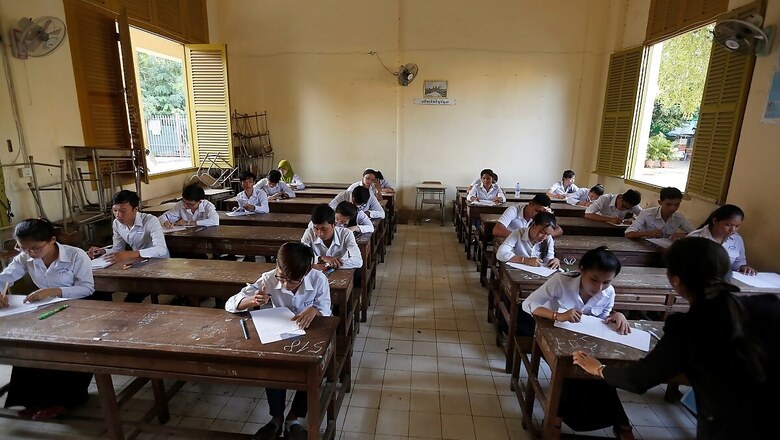
views
The next Union Budget is due in less than a week. Once again, it is time to reflect on our priorities as a nation and allocate resources based on these priorities.
The year 2020 is a landmark one for setting the policy directive of such a priority in India. The year finally saw the long-awaited approval of the National Education Policy 2020 by the Government of India. Built on the foundational pillars of access, equity, quality, affordability, and accountability, the NEP envisages a new policy framework for the Indian education system, which aims to eventually boost enrolment, transform education delivery through digitalisation, improve learning outcomes, and make school and higher education more holistic, flexible, and multidisciplinary.
A major challenge before us comes from the lack of quality education in India. Quality of training and education determine the quality of labour in a country. However, the quality of India’s education is not very inspiring. According to the latest Annual Status of Education Report (ASER)-Beyond Basics Survey 2017, close to 25 per cent of the students in the age group of 14 to 18 years cannot even read basic text fluently in their native language. More than half of the youth in this age group struggle to perform basic mathematical operations, like multiplication and division. Only 25 per cent of them can do ordinary, commonplace financial calculations, 42 per cent could point their state on a map, 56 per cent could calculate weights. All these numbers reflect a sorry state of affairs regarding the skill level of our youth. If a large section of our students has not moved beyond the basics, then how can they achieve the 21st century skill sets with automation and artificial intelligence taking centre stage? If these youths, who are close to the income-earning age, remain disadvantaged, then that might adversely affect the future dividend.
The second aspect of education that is of concern relates to the price of education in India. Data from disaggregated consumer price index (CPI) shows that the cost of education is not only increasing over time, but it has remained elevated over the consumer price in India. The shocking picture comes from the fact that education inflation is higher in rural India than in urban India. Moreover, the prices of several components related to the education sector, such as tuition and other fees in schools and colleges, private tutors and coaching centres, costs of books and journals, the school bus and van charges are also increasing relatively at a higher rate compared to the overall CPI in India. An overpriced tuition cost including higher tuition fees and higher tutor fees are signs of worry for the education sector. If a student enrolled in a high-priced institution still needs to go to an expensive private tutor, that is an ominous sign of danger ahead.
The deteriorating quality of education and its ever-increasing price will affect skill development and consequently the overall productivity and growth of the economy. With the idea of making India a five trillion-dollar economy, the country needs a massive amount of skilled labour force, which will come if we can ensure accessible, quality education. Unfortunately, government spending on education is still low. Recent trends show the allocation of funds does not seem to be a priority for the government. India still spends less than 4 per cent of its GDP on education, while the world average is 4.8 per cent. NEP sets the target at 6 per cent.
Education being one of the prime drivers of long-term economic outcomes, should receive a substantial boost in budgetary allocation. The ongoing pandemic has brought several new challenges to this sector. Most of the students are still not in school. Digital access to education is still a problem for the majority of students. The pandemic has also accelerated the recent shift of students from private to government schools due to financial distress. Therefore, a massive investment is expected in this Budget to create a conducive learning infrastructure and allocate funds to supply the necessary equipment to support learning.
This Budget should begin by reversing the trend of a declining share of budgetary allocation on education sector observed over the last few years (from 3.71% of GDP in 2017-18 to 3.48% of GDP in 2018-19 and 3.2% in 2019-20). Enhanced budgetary allocation at all levels of education should be one of the top priorities of this Budget. India’s much-awaited ‘demographic dividend’ will not materialise unless our youth is not just literate but is equipped with adequate skill sets to grab the opportunities presented in front of it. I hope the government realises this and fulfills the promise it made through the NEP.
(The Author is Associate Professor of Economics at the FLAME University. Views Expressed are Personal.)
Read all the Latest News, Breaking News and Coronavirus News here



















Comments
0 comment